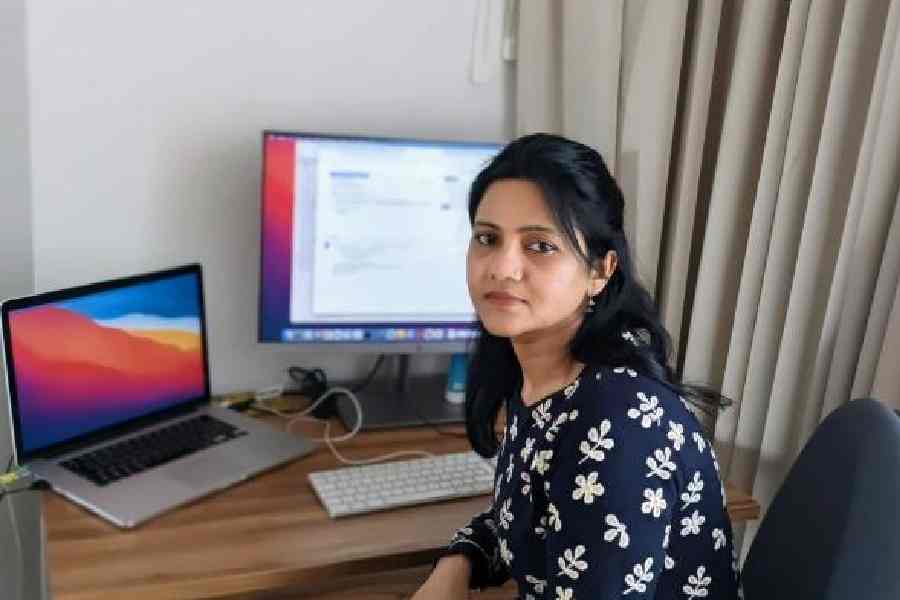Curator of bio science: Deepti Jaiswal Kundu speaks about her job and what it entails


q What exactly does a scientific curator or biocurator do?
Biocurators play crucial roles in the field of biology and bioinformatics, primarily focussing on the organisation, annotation and management of biological information. Responsibilities include:
Data Curation: Collecting and curating biological data from various sources such as scientific literature, databases and experimental results, ensuring data accuracy, consistency and completeness
Annotation: Adding relevant metadata to biological data, including information about genes, proteins, diseases and other biological entities, employing standardised nomenclature and ontology to enhance data interoperability
Database Management: Managing and updating biological databases to keep information current and relevant; developing and implementing database structures and systems for efficient data storage and retrieval
Literature Review: Keeping abreast of scientific literature; extracting relevant information from research articles and integrating it
into databases
Ontology Development: Contributing to the development and maintenance of biological ontologies and controlled vocabularies to standardise data representation
Quality Control: Implementing quality control measures to ensure the accuracy and reliability of curated data; collaborating with researchers and domain experts to resolve discrepancies and improve data quality
Tool Development:
Developing or contributing to the development of tools and software for data curation, annotation and analysis
Collaboration: Collaborating with researchers, scientists and other professionals to understand data requirements and provide support for their projects
Community Engagement: Engaging with the scientific community to understand user needs and incorporating feedback to improve data curation practices
Training and Documentation: Providing training to researchers and database users on data submission and retrieval processes; creating and maintaining documentation for data curation protocols and tools.
q You work as a scientific curator at the EMBL-EBI. What is it?
The European Molecular Biology Laboratory (EMBL) is an intergovernmental organi- sation focussed on molecular biology research. The European Bioinformatics Institute or EBI serves as its bioinformatics hub and together
they form EMBL-EBI that is located on the Wellcome Genome Campus in Hinxton, which is near Cambridge in the United Kingdom.
q What is the function of the EMBL-EBI?
It provides a wide range of bioinformatics services and resources to the global scientific community. These services include databases, tools
and infrastructure that support the storage, analysis and dissemination of biological data. It also hosts and maintains a variety of biological databases covering genomics, proteomics, functional genomics and other related fields. It is also actively involved in research and development activities in the field of bioinformatics. It trains scientists and researchers in the use of bioinformatics tools and resources.
q Is this a new-age job or did it exist in some other form, called by some other name, in earlier centuries?
The role of a biocurator, as we understand it today, has evolved over time with the growth of biological and genomic research, as well as the increasing volume and complexity of biological data. The term “biocurator” itself may not have been commonly used in the early days of biological research, but the activities associated with the role have historical roots. In the past, individual researchers often curated and managed their own data.
q Who can be a biocurator?
At its very basic, anyone with a bachelor’s or an advanced degree in biology, bioinformatics or a related field, depending on the level of employment. [Deepti did her bachelor’s in bio science from Tilakdhari Singh College in Uttar Pradesh and her master’s in bioinformatics from the Institute of Advanced Studies in Education, Rajas- than. She did her doctorate from Masaryk University Brno in the Czech Republic with a specialisation in biomolecular chemistry.]
q Which other places — apart from EBI — hire scientific curators?
The EBI itself hosts various databases and resources requiring biocuration. For instance, there is the Protein Data Bank, a worldwide repository for the 3D structural data of large biological molecules; Swiss-Prot and UniProt Knowledgebase, the Swiss
Institute of Bioinformatics (SIB) and the Protein Information Resource (PIR) — and Ensembl, which is a genome browser. Then there is the National Center for Biotechnology Information, which is a part of the US National Library of Medicine; Jackson Laboratory, a non-profit institution; model organism databases such as FlyBase, WormBase and The Arabidopsis Information Resource; Genome Aggregation Data- base, hosted by the Broad Institute. These are just a few examples. There are many other institutions, universities and research centres where biocurators contribute to the curation and management of biological data. The specific focus and responsibilities of biocurators may vary depending on the type of data and research conducted by each institution.
q From being a science student in India to doing a PhD from Masaryk in
the Czech Republic to working in the UK, were all of these seamless and smooth transitions?
It is true that the principles of science are universally applicable, but the educational approaches and experiences can vary significantly… My doctoral training has played a pivotal role in shaping my academic perspective. The programme’s emphasis on practical application and conceptual understanding has prepared me in a way that differs markedly from my previous educational experiences. Instead of simply memorising information, I was encouraged to explore the real-world implications of scientific concepts. Then there was the opportunity to actively engage with the broader scientific community through participation in conferences and seminars. These events provided a platform for exchanging ideas, presenting research findings and gaining exposure to the latest advancements in the field.